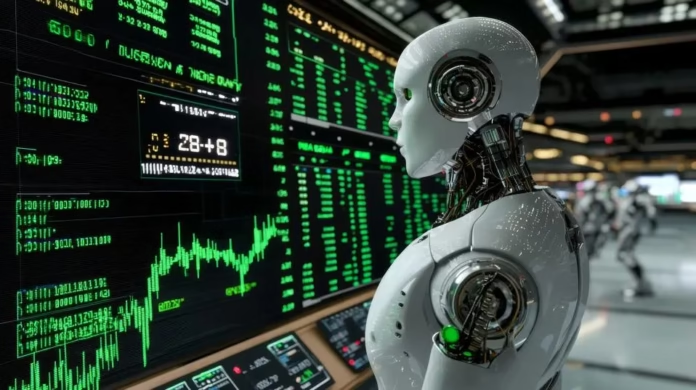Artificial Intelligence (AI) is widely seen as the future of technology, promising to transform industries, drive innovation, and reshape the global economy. Yet behind the hype lies a sobering question: what if the AI industry doesn’t live up to its promise? The stakes are enormous, because so much capital, infrastructure, and market confidence have already been tied to AI. If the industry stumbles, the shockwaves could extend far beyond Silicon Valley and into the broader global economy.
The Stock Market’s AI Boom
In 2024, the S&P 500 surged by an impressive 24 percent. Nearly half of that growth came from just seven companies — often called the “Magnificent Seven”: Meta, Amazon, Google, Microsoft, Nvidia, Tesla, and Apple. These tech giants have become the face of the AI boom, pouring billions into research, infrastructure, and product development. Their stock valuations are riding high on the promise of AI breakthroughs, but so far, tangible returns outside the stock market have been far less clear.
According to industry estimates, by early 2026, Meta, Amazon, Microsoft, Google, and Tesla will have spent nearly $560 billion on AI projects. Yet the collective revenue attributed directly to AI stands at only $35 billion — a staggering gap between investment and return. Even more striking is the role of AI investment in the U.S. economy. In the first half of 2025, business spending on AI contributed more to GDP growth than all consumer spending combined.
The Growing Revenue Gap
This widening revenue gap is emerging as a major risk factor for the tech sector and the economy as a whole. AI has been marketed as the cornerstone of the next wave of productivity and efficiency, but in practice, its results in workplace environments remain underwhelming. Many deployments have failed to deliver measurable returns, leading to growing skepticism.
Still, pressure from investors and boards is pushing managers to justify massive AI investments. In response, companies are resorting to cost-cutting measures such as slowing hiring or initiating layoffs. These moves may improve short-term financials, but they do little to prove AI’s real-world value. Worse, they may destabilize the workforce, leaving businesses with fewer employees but no real productivity gains to offset the cuts.
The Risk of Economic Slowdown

If this pattern continues, the consequences could be severe. Rising unemployment paired with declining efficiency is a dangerous combination that could stall economic growth. It creates a paradox: businesses slash jobs expecting AI to fill the gap, but if AI tools underdeliver, the result is a weaker workforce and reduced productivity.
This scenario is not entirely new. During the computer boom of the 1980s, companies embraced early email systems and laid off secretaries and typists. The expectation was increased efficiency, but the opposite often occurred. Professionals spent more time managing their own communications, which ate into their primary responsibilities. As computer scientist Cal Newport has observed, email made people feel productive but often led to wasted time and inefficiency. AI risks repeating the same cycle, but on a much larger scale — with far greater stakes.
Why AI Is Different

The critical difference between past technology fads and today’s AI boom is the scale of its financial entanglement. Email and early computing shifts disrupted workflows, but they didn’t underpin half the stock market. AI does. Trillions of dollars in market capitalization, massive data center investments, and global supply chains for chips and infrastructure are now tied directly to AI’s success.
If AI fails to deliver meaningful returns, it won’t just disappoint investors — it could trigger a chain reaction across financial markets, corporate strategies, and international economies. Job markets could weaken, productivity could stagnate, and the confidence driving stock valuations could collapse.
The Road Ahead
None of this is to say that AI is destined to fail. It remains one of the most promising areas of technological advancement, with breakthroughs in medicine, automation, logistics, and creativity already visible. But unless the industry can close the gap between massive spending and real-world results, the risks will continue to grow.
AI is not just another emerging technology; it has become the backbone of market optimism and corporate strategy. If it falters, the consequences won’t be confined to Silicon Valley — they will ripple across the entire global economy. The future of AI, in other words, is no longer just a tech story. It’s an economic one.


